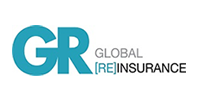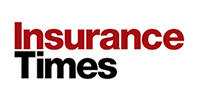Next month sees the end of the DVLA's consultation on new ways to regulate the supply of vehicle number plates. This initiative is one of a number being led by the government, motor manufacturers and the insurance industry to help achieve the goal of reducing vehicle crime 30% by 2004.
The measures include the collaboration of motor manufacturers and insurance associations to implement vehicle security grading for consumers. It is hoped this will help people make objective comparisons between manufacturers and models. A police database will also help track uninsured drivers.
There are doubts as to how effective the DVLA's proposals are. Included in the paper are measures to establish a register of authorised number plate suppliers in the UK (in the region of 27,000) which will be legally required to maintain comprehensive records of all plates sold with verification that proof of identity was provided by the purchaser. Local magistrates' courts will be handed powers to suspend trading licenses and impose fines for registered suppliers found be to breaking the law.
The proposed maximum fine for supplying a counterfeit plate is £2,500 or suspension of license and the maximum fine for a plate supplier trading without being registered is being proposed at only £5,000. These are insignificant to those indulging in organised vehicle crime and, when compared to the value of vehicle ringing in the UK, are hardly a deterrent. If Lord Archer can go to jail for four years for lying about his sex life, I think we can be a bit tougher on these crooks.
The police will have access to the list of registered traders, yet there is no mention of sharing registered plate information among vehicle-related parties – police, insurers, intermediaries and claims handlers.
This seems a wasted opportunity to join forces and work together to reduce crime. By pooling the information channels to a single point, we can achieve this. For example, the new uninsured vehicle database soon to go live could provide the technology infrastructure and base information to develop a definitive vehicle resource – from plate registration through to insurance cover. Centralised data will help reduce the cost and time taken to process a claim, in addition to reducing crime.
Some organisations will be able to request details of the registered keeper from the DVLA. This can be automated and is very efficient, but is expensive if used in volume. Here again, we have an opportunity to combine registered keepers with insurance details. It would also be an central point for police to provide details of stolen vehicles.
We could go a step further and require that all MOT tests are registered on the same site by the inspecting garages. Many accidents and injuries are caused by badly maintained vehicles. It could reduce the cost of policing if a website flagged up all registrations overdue for their MOT test.
Technology could be employed to reduce costs to all concerned, enabling police to focus on the perpetrators of crime rather than relying on random spot checks and improving safety all at minimal cost.
Further information on this consultation document can be found at www.dvla.gov.uk
Those in the insurance industry should to take time to respond (the closing date is September 24) and urge the powers that be to take this opportunity to embrace the whole picture. We have the highest vehicle crime per capita in Europe. Whenever I ask “knowledgable” insurance types why this is, they look at me blankly. This might be the first step back from that dubious distinction.




































